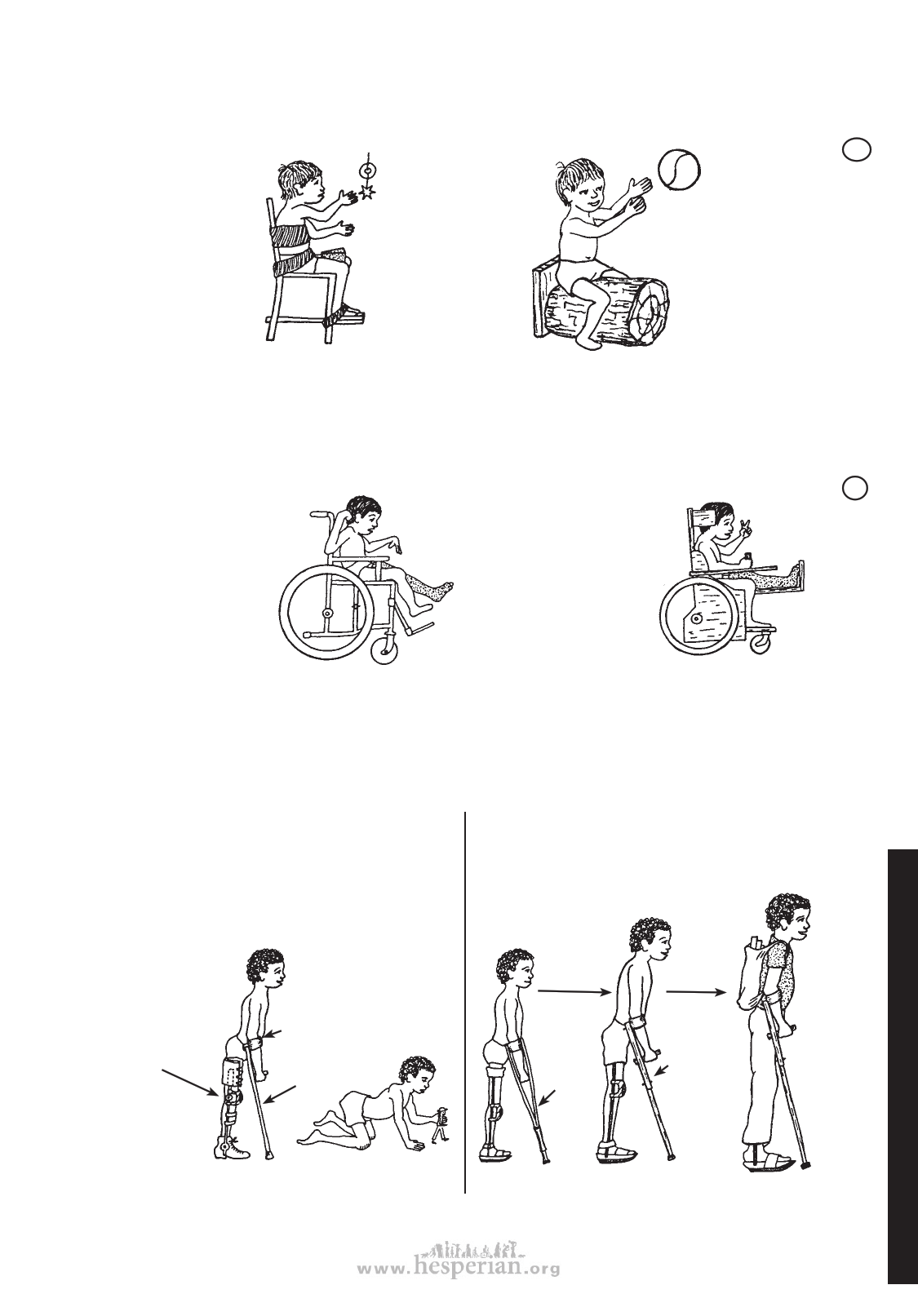
INTRODUCTION TO PART 3 527
2. As any child grows and develops, his needs keep changing. Frequent re-evaluation
is necessary to find out if an aid should be changed or is no longer needed. Ask the
child what he wants. For example:
Misha has been
slow to develop
balance for
sitting. At
first, straps
helped him
sit in a stable,
upright position.
But as he
continues to
develop, keeping
him strapped
in a chair may
keep him from
improving his
balance more or
from learning to
sit without help.
Misha might be
helped more by
a seat that
gives support
to his legs and
hips but lets
him balance the
top part of his
body without
help (see
p. 573).
APPROPRIATE ONLY AT FIRST
APPROPRIATE LATER
CP
3. A simple, low-cost aid that is designed and made to meet the needs of a particular
child often works better than an expensive commercial one. For example:
Commercial wheelchairs
are often too big for
children, and hard
to adapt to their
positioning needs.
Repairs are difficult
and expensive;
replacement parts are
hard to get.
LESS APPROPRIATE
A simple wood or plywood
chair can be easily made
to fit the child’s size
and positioning needs.
Repairs and replacements
are easy because bicycle
wheels and other
standard parts are used.
(See p. 620.)
MORE APPROPRIATE
4. Consider the economic limitations of the family and community. Growing
children will frequently need larger sizes of aids such as leg braces, artificial limbs, and
special seating. Use either aids that are cheap enough to replace often, or that can be
easily made bigger. For example:
Poor families
sometimes spend
as much as a
year’s earnings
on an expensive,
modern brace
with knee and
ankle hinges and
special shoes.
When the child
outgrows the brace,
or it breaks, the
family cannot
afford to repair or
replace it—so the
child goes back to
crawling, develops
contractures and may
never walk again.
A cheap brace without hinges will not let the
child bend his knee to sit. But the brace can be
cheaply replaced, so the child is able to stay
on his feet. Up to 20 low-cost braces can be
made for the price of one expensive one.
costly
hinged
brace with
orthopedic
boots
costly
commercial
elbow
crutch
bamboo
elbow
crutch
adjustable
homemade
elbow
crutch
CP
LESS APPROPRIATE
MORE APPROPRIATE (See p. 543 and 586.)
disabled village children